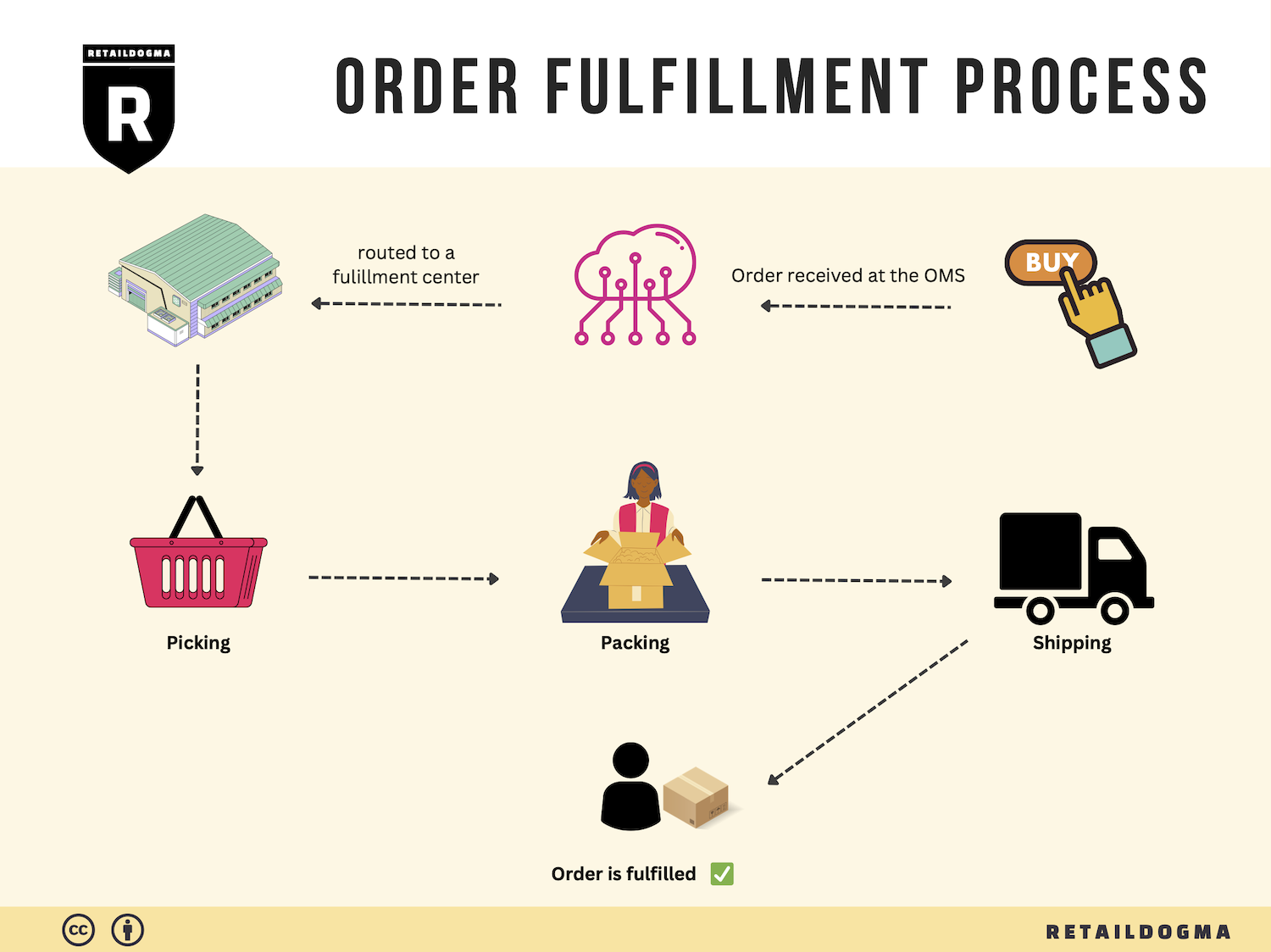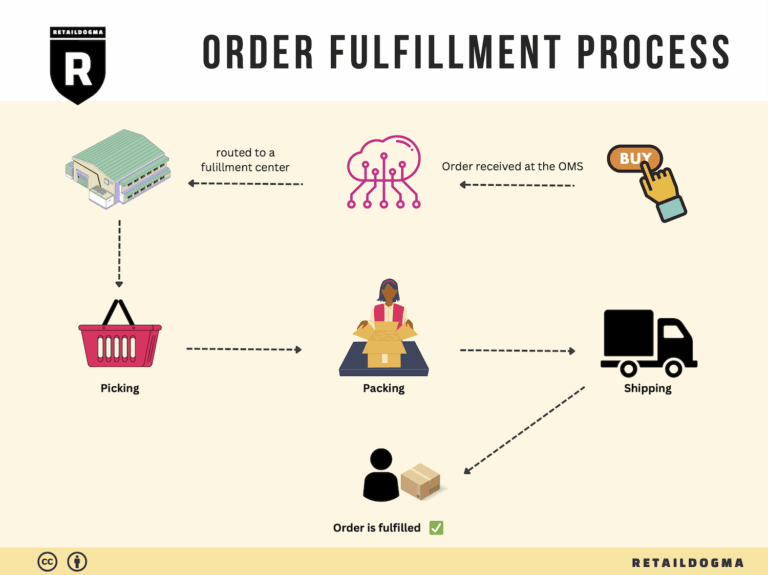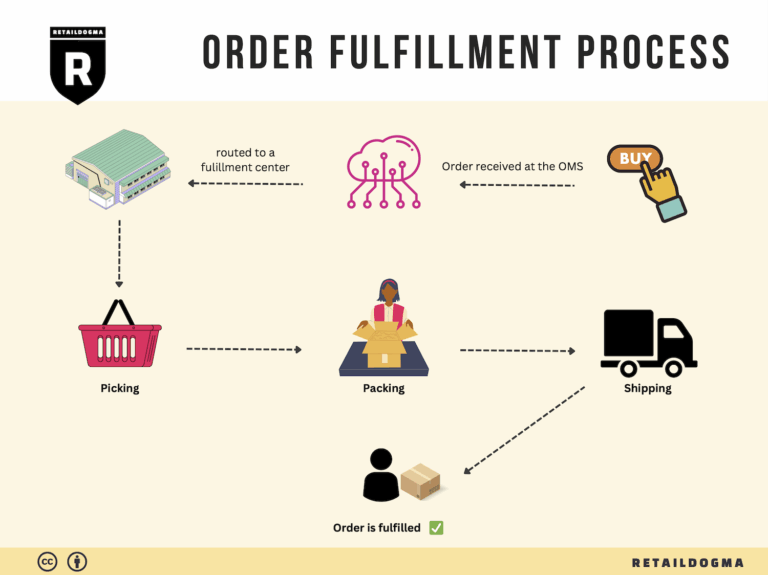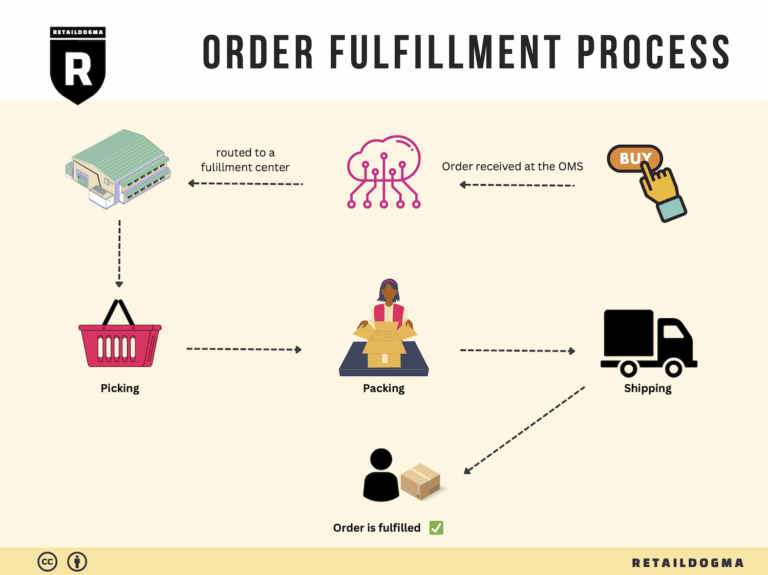What Is A Fulfillment Center? A Complete Guide (2025)
What is E-commerce Fulfillment? An Introduction for Growing Businesses
As your online business begins to scale, the excitement of growth can quickly turn into a daunting challenge—especially when it comes to packing and shipping orders. Many e-commerce entrepreneurs find themselves overwhelmed by the logistics of getting products into the hands of their customers. This is where e-commerce fulfillment comes into play. Simply put, fulfillment is the process of receiving, processing, and delivering orders to customers. It encompasses everything from inventory management to shipping logistics, and it is crucial for maintaining customer satisfaction and operational efficiency.
In this guide, we will delve into the various models of e-commerce fulfillment, including Third-Party Logistics (3PL) and Fulfillment by Amazon (FBA). Each model offers different benefits and challenges, and understanding these options is essential for selecting the right strategy for your business.
We will also cover core services involved in fulfillment, such as warehousing, order processing, packing, and shipping. Knowing what services are available can help you identify which aspects of the fulfillment process you might want to outsource and which you might prefer to handle in-house.
Choosing the right fulfillment partner is another critical decision for growing businesses. We will provide insights into evaluating potential partners based on factors such as technology integration, customer service, scalability, and geographic location. Understanding these criteria can help you find a partner that aligns with your business goals and can adapt as your needs evolve.
Additionally, pricing is a significant consideration in e-commerce fulfillment. We will break down the various costs associated with fulfillment services, including storage fees, shipping rates, and handling charges. This knowledge will empower you to budget effectively and avoid hidden costs that can impact your bottom line.
Ultimately, the goal of this guide is to equip e-commerce business owners, operations managers, and entrepreneurs with the knowledge they need to make informed decisions about their logistics. By understanding the intricacies of e-commerce fulfillment, you can streamline your operations, enhance customer satisfaction, and focus on what you do best—growing your business.

What You’ll Learn In This Guide
- What is E-commerce Fulfillment? An Introduction for Growing Businesses
- The Order Fulfillment Process: From ‘Buy’ Button to Customer’s Door
- Comparing Fulfillment Models: In-House vs. 3PL vs. Dropshipping
- A Deep Dive into Amazon FBA: Pros, Cons, and Who It’s For
- Core Services Offered by Fulfillment Centers
- How to Choose a Fulfillment Partner: A 6-Point Checklist
- Understanding Fulfillment Pricing: A Breakdown of Common Fees
- Frequently Asked Questions (FAQs) about Fulfillment
- Conclusion: Is Outsourcing Fulfillment the Right Move for Your Business?
- Important Disclaimer
The Order Fulfillment Process: From ‘Buy’ Button to Customer’s Door
1. Receiving Inventory
The first step in the order fulfillment process is receiving inventory. This involves the acceptance of goods from suppliers or manufacturers into the fulfillment center, such as the Amazon Fulfillment Center-Tus2 in Tucson, AZ. During this stage, each item is checked against purchase orders to ensure accuracy in quantity and condition. This process is crucial as it establishes the foundation for inventory accuracy. A key term associated with this step is SKU (Stock Keeping Unit), which is a unique identifier assigned to each product, enabling efficient tracking and management throughout the supply chain.
Effective receiving practices help minimize discrepancies and stockouts, ensuring that the right products are available when orders come in. For businesses looking to scale, investing in robust inventory management systems can streamline this process, reducing human error and enhancing operational efficiency.
2. Warehouse Storage
Once inventory is received, it must be stored appropriately within the fulfillment center. This involves organizing products in a way that maximizes space and facilitates easy access. Different storage strategies, such as ABC analysis (categorizing inventory based on its importance and turnover rate), can be employed to optimize warehouse layout.
Efficient warehouse storage is important because it directly affects the speed and accuracy of order fulfillment. A well-organized warehouse minimizes the time spent locating products, which can significantly reduce overall order processing time. For businesses, implementing a Warehouse Management System (WMS) can enhance tracking and management of stored items, providing real-time data on stock levels and locations.
3. Order Picking
The third step in the order fulfillment process is order picking, which involves retrieving items from their storage locations to fulfill customer orders. This step is critical as it directly impacts customer satisfaction; errors in picking can lead to delays and returns. Pick lists are commonly used in this stage, serving as detailed instructions for warehouse staff on which items to collect and their respective locations.
To optimize order picking, businesses can implement various methods, such as batch picking (picking multiple orders simultaneously) or zone picking (designating specific areas of the warehouse for specific items). These strategies can significantly increase efficiency, especially in high-volume fulfillment environments. By focusing on minimizing picking errors and maximizing speed, e-commerce businesses can improve their overall order fulfillment metrics.
4. Order Packing
After items have been picked, they proceed to the packing stage. This involves securely packaging products to prevent damage during transit while also preparing them for shipping. Proper packing is vital as it protects inventory and ensures that customers receive their orders in perfect condition. Key terms associated with this process include packaging materials (such as boxes, bubble wrap, and tape) and packing slips, which accompany the order and provide important information to the customer.
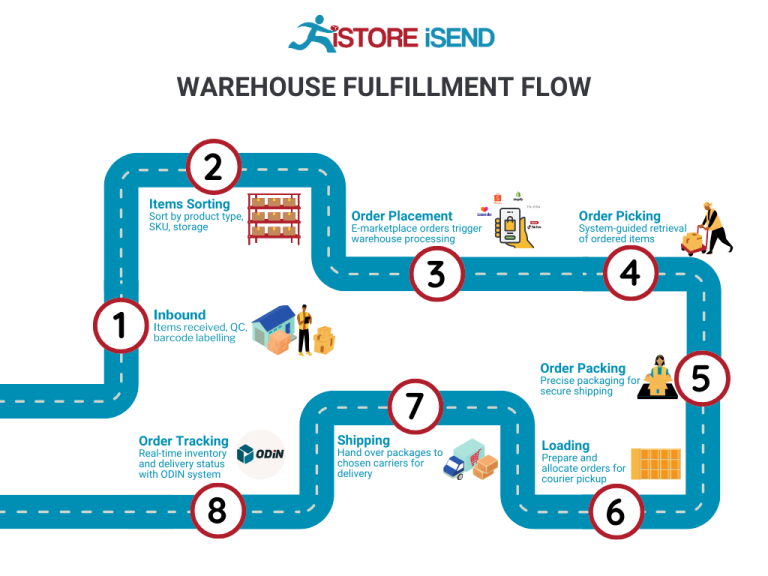
Efficient packing processes can also enhance operational efficiency. For example, using automated packing systems or standardized box sizes can reduce packing time and materials waste. Additionally, including branded packaging can enhance the unboxing experience for customers, fostering brand loyalty and encouraging repeat purchases.
5. Shipping & Delivery
The final step in the order fulfillment process is shipping and delivery, where packed orders are sent out to customers. This stage involves selecting the appropriate shipping method based on factors such as delivery speed, cost, and destination. A key term in this step is shipping carrier, which refers to the service provider responsible for transporting the package, such as UPS, FedEx, or USPS.
Efficient shipping and delivery practices are critical for customer satisfaction. Offering multiple shipping options (e.g., standard vs. expedited) can cater to different customer needs and preferences. Furthermore, utilizing shipping software can streamline label printing, tracking, and communication with carriers, providing real-time updates to customers about their order status. As businesses scale, optimizing their shipping strategies can lead to reduced costs, improved delivery times, and enhanced customer loyalty.
In conclusion, understanding and optimizing each step of the order fulfillment process is essential for e-commerce businesses looking to scale effectively. By focusing on receiving inventory, warehouse storage, order picking, order packing, and shipping & delivery, businesses can enhance their operational efficiency and customer satisfaction.
Comparing Fulfillment Models: In-House vs. 3PL vs. Dropshipping
Comparison of Fulfillment Models
| Model | Who Handles Inventory | Best For (Business Stage) | Key Advantage | Key Disadvantage |
|---|---|---|---|---|
| In-House Fulfillment | Business Owner/Staff | Established Businesses | Full control over inventory and processes | High overhead costs and resource requirements |
| Third-Party Logistics (3PL) | Third-Party Providers | Growing Businesses | Scalability and expertise in logistics | Less control over inventory and potential hidden fees |
| Dropshipping | Supplier/Vendor | Startups/Small Businesses | Low upfront costs and no inventory management | Lower profit margins and reliance on supplier reliability |
In-House Fulfillment
In-house fulfillment is when a business manages its own inventory, storage, packing, and shipping processes. This model is typically suited for established businesses that have the capacity to handle logistics themselves. The primary advantage of in-house fulfillment is the complete control it offers over inventory management, order processing, and customer service. Businesses can tailor their fulfillment processes to meet specific needs and adapt quickly to changes in demand. However, this model comes with significant disadvantages, including high overhead costs associated with maintaining warehouse space, hiring staff, and investing in technology. For many businesses, these expenses can limit cash flow and divert resources away from core activities, especially if order volumes fluctuate significantly.
Third-Party Logistics (3PL)
Third-party logistics (3PL) involves outsourcing logistics operations to a specialized provider. This model is ideal for growing businesses that need to scale their operations without the burden of managing logistics internally. 3PL providers offer a range of services, including warehousing, inventory management, order fulfillment, and shipping, allowing businesses to focus on their core competencies. One of the key advantages of using a 3PL is the scalability it provides; businesses can easily adjust their logistics needs in response to market changes or seasonal demand. Additionally, 3PLs often have established relationships with carriers, which can lead to cost savings and improved shipping times. However, a notable disadvantage is the loss of control over inventory management and fulfillment processes. Businesses must also be wary of potential hidden fees that can arise from using a 3PL, as these costs can erode profit margins if not carefully managed.
Dropshipping
Dropshipping is a fulfillment model where a retailer does not keep goods in stock but instead transfers customer orders directly to a supplier, who then ships the products to the customer. This model is particularly appealing to startups and small businesses due to its low upfront costs and minimal risk. Since retailers do not have to invest in inventory or manage warehousing, they can focus on marketing and sales. The main advantage of dropshipping is that it eliminates the need for inventory management, allowing businesses to offer a wide range of products without the associated costs. However, dropshipping comes with its own set of challenges. Profit margins are generally lower compared to other fulfillment models, as retailers often pay a premium to suppliers. Furthermore, businesses are heavily reliant on their suppliers for inventory availability and shipping speed, which can lead to customer dissatisfaction if suppliers fail to meet expectations.
In conclusion, choosing the right fulfillment model is crucial for the success of an e-commerce business. Each model has its unique advantages and disadvantages, making it essential for business owners to assess their specific needs, resources, and growth objectives before making a decision. Understanding these factors can help businesses create a streamlined and efficient logistics strategy that supports their growth and enhances customer satisfaction.
A Deep Dive into Amazon FBA: Pros, Cons, and Who It’s For
Understanding Fulfillment by Amazon (FBA)
Fulfillment by Amazon (FBA) is a service offered by Amazon that enables sellers to store their products in Amazon’s fulfillment centers. This service allows sellers to leverage Amazon’s extensive logistics network, which includes warehousing, packing, and shipping. When a customer orders a product, Amazon handles the entire fulfillment process, from picking and packing to shipping and customer service. This comprehensive service provides sellers with the opportunity to reach a broad audience, often leading to increased sales.
How FBA Works
-
Setup and Inventory Management: Sellers begin by creating an Amazon seller account and choosing the products they want to sell. Once products are listed, sellers prepare their inventory according to Amazon’s guidelines and ship it to Amazon’s fulfillment centers.
-
Storage and Fulfillment: Once products arrive at the fulfillment center, Amazon takes care of storage. When an order is placed, Amazon picks the product from the shelf, packs it, and ships it directly to the customer.
-
Customer Service: Amazon also manages customer service and returns for FBA products, which can significantly reduce the workload for sellers.
-
Sales and Reporting: Sellers can track their sales and inventory levels through Amazon’s seller dashboard, gaining insights into performance metrics and trends.
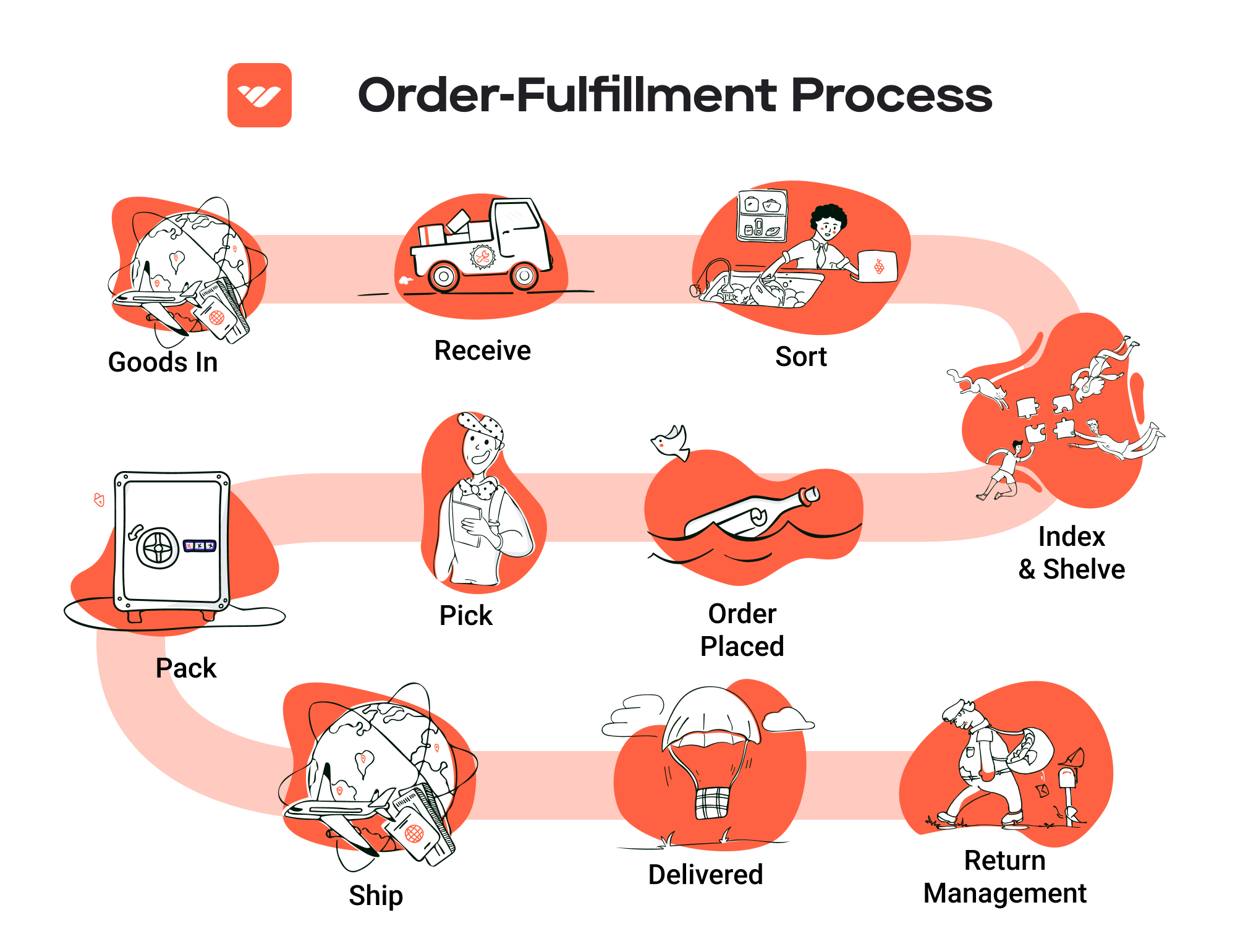
Pros of Fulfillment by Amazon
Prime Eligibility
One of the most significant advantages of using FBA is the eligibility for Amazon Prime. Products fulfilled by Amazon are marked with the Prime logo, making them attractive to Prime members who seek fast, free shipping. This can lead to increased visibility and higher conversion rates, as Prime members are more likely to purchase products that offer these benefits.
Customer Trust
Amazon has built a reputation for reliability and customer service. By using FBA, sellers can benefit from this trust, as customers feel more secure purchasing products that are backed by Amazon’s fulfillment and return policies. This trust can enhance a seller’s credibility, particularly for new brands.
Multi-Channel Fulfillment
FBA allows sellers to fulfill orders not only from Amazon but also from other sales channels, including their own websites and other online marketplaces. This flexibility enables sellers to streamline their logistics and manage their inventory more efficiently across various platforms.
Scalable Operations
FBA provides a scalable solution for growing businesses. As demand increases, sellers can easily send more inventory to Amazon’s fulfillment centers without needing to invest in their own warehousing or shipping infrastructure. This scalability is particularly beneficial for seasonal or fluctuating sales.
Cons of Fulfillment by Amazon
High Fees
While FBA offers numerous advantages, it comes with significant costs. Sellers are subject to various fees, including storage fees for the inventory held in Amazon’s warehouses and fulfillment fees for each order processed. These costs can add up, especially for low-margin products, potentially eroding profits.
Strict Inventory Rules
Amazon has specific guidelines regarding inventory management, including restrictions on certain products and requirements for labeling and packaging. Sellers must adhere to these rules to avoid penalties or removal of their listings. This can be challenging for sellers unfamiliar with Amazon’s policies.
Commingling Risks
FBA utilizes a commingling system, where inventory from different sellers is stored together. While this can streamline fulfillment, it also poses risks. If a customer receives a defective or counterfeit product from another seller, it can negatively impact the original seller’s reputation, even if they did not sell that product.
Limited Control Over Shipping
When using FBA, sellers relinquish control over the shipping process. This means they cannot customize packaging or branding, which can be a downside for those looking to maintain a specific brand identity. Additionally, sellers may face challenges if there are shipping delays or other issues, as they must rely on Amazon to resolve them.
Who is FBA Best For?
Fulfillment by Amazon is particularly beneficial for:
-
Small to Medium-Sized Businesses: Sellers who do not have the resources to manage their own logistics can leverage Amazon’s extensive network and customer base.
-
New Sellers: Those just starting out can gain immediate access to a trusted platform and customer base, minimizing the challenges associated with establishing a new brand.
-
Brands with Seasonal Products: Businesses that experience fluctuations in sales can take advantage of FBA’s scalability without committing to long-term warehousing costs.
-
Multi-Channel Sellers: Sellers who operate on multiple platforms can streamline their fulfillment processes by using FBA for all orders, enhancing efficiency.
In summary, while Fulfillment by Amazon offers significant advantages such as Prime eligibility, customer trust, and scalability, it also comes with challenges, including high fees and strict inventory management rules. Sellers should carefully consider their business model, product types, and growth strategies when deciding if FBA is the right fit for them. By understanding both the pros and cons, e-commerce business owners can make informed decisions that align with their operational goals and customer expectations.
Core Services Offered by Fulfillment Centers
Inventory Management & Warehousing
Inventory management and warehousing are foundational components of e-commerce fulfillment operations. Fulfillment centers, like Amazon Fulfillment Center-Tus2, offer extensive warehousing capabilities that allow businesses to store their products in a secure and organized environment. Advanced inventory management systems are employed to track stock levels, manage reorder points, and forecast demand, ensuring that businesses maintain optimal inventory levels without overstocking or stockouts.
The benefits of effective inventory management are manifold. Firstly, it reduces carrying costs associated with excess inventory and minimizes waste due to unsold products. Secondly, real-time inventory tracking enhances decision-making, allowing businesses to respond swiftly to market changes and customer demands. By outsourcing warehousing to fulfillment centers, e-commerce businesses can focus on core activities such as marketing and sales, rather than the complexities of storage and stock management.
Pick and Pack Services
Pick and pack services are crucial in the fulfillment process, referring to the operations involved in selecting products from inventory and packaging them for shipment. Fulfillment centers utilize sophisticated technology and systematic processes to streamline these operations. Orders are processed quickly, with automated systems guiding workers in picking the right items and packing them efficiently to minimize damage during transit.
The advantages of pick and pack services are significant for e-commerce businesses. Speed is a primary benefit; fulfillment centers are designed to handle high volumes of orders rapidly, which is essential for maintaining customer satisfaction. Additionally, accuracy in picking reduces the likelihood of returns due to incorrect items being shipped, thereby saving costs associated with returns processing. Ultimately, efficient pick and pack services contribute to faster order fulfillment times, enhancing the overall customer experience and fostering loyalty.
Kitting and Assembly
Kitting and assembly services involve grouping multiple products into a single package or preparing components for assembly before shipping. This service is particularly valuable for businesses that offer product bundles or kits, such as subscription boxes or promotional packages. Fulfillment centers can manage the entire kitting process, ensuring that items are assembled correctly and efficiently, ready for shipment.
The benefits of kitting and assembly are twofold. First, they allow e-commerce businesses to offer customized solutions to their customers, enhancing the perceived value of their products. Second, by outsourcing kitting to a fulfillment center, businesses can streamline their operations, reduce labor costs, and eliminate the need for additional space and equipment for assembly processes. This leads to increased operational efficiency and the ability to scale operations as demand grows.
Returns Management (Reverse Logistics)
Returns management, or reverse logistics, is an essential service provided by fulfillment centers to handle product returns efficiently. This process involves receiving returned items, inspecting them for quality, restocking sellable goods, and managing refunds or exchanges. A well-organized returns management system is vital for maintaining customer satisfaction and brand reputation.
The benefits of effective returns management are significant for e-commerce businesses. Firstly, a streamlined returns process enhances customer trust and loyalty, as customers appreciate hassle-free return policies. Secondly, efficient handling of returns can reduce costs associated with processing returns and restocking items. Fulfillment centers often have established protocols for evaluating returned items, allowing businesses to quickly determine their resale potential or necessary actions, such as repairs or disposal. By managing returns effectively, e-commerce businesses can turn a potentially negative experience into a positive one, ultimately leading to increased customer retention and repeat sales.
In conclusion, leveraging the core services offered by fulfillment centers, such as inventory management, pick and pack services, kitting and assembly, and returns management, can significantly enhance the operational efficiency of e-commerce businesses. By outsourcing these critical functions, companies can focus on scaling their sales and improving customer satisfaction, positioning themselves for long-term success in a competitive marketplace.
How to Choose a Fulfillment Partner: A 6-Point Checklist
Location & Warehouse Network
Importance:
The geographical location of your fulfillment partner significantly impacts shipping times and costs. A strategically located warehouse network allows for faster deliveries to your customers and reduces shipping expenses.
Questions to Ask:
– Where are your warehouses located, and how do they align with our target market?
– Can you provide information on your shipping times to various regions?
– Do you have multiple warehouse locations to facilitate faster order fulfillment?
– How do you handle shipping to international customers?
Technology & Integrations
Importance:
In today’s digital landscape, having robust technology and seamless integrations with your e-commerce platform is crucial for efficiency. The right technology can automate order processing, inventory management, and reporting.
Questions to Ask:
– What technology platform do you use for order management and fulfillment?
– How do you integrate with major e-commerce platforms (e.g., Shopify, WooCommerce, Amazon)?
– Can you provide real-time inventory tracking and reporting capabilities?
– What kind of data analytics do you offer to help us understand our fulfillment performance?
Specializations (e.g., Cold Storage, Oversized Items)
Importance:
Your product type may require specific storage conditions or handling capabilities. A fulfillment partner that specializes in your product category can ensure better care and compliance with regulations.
Questions to Ask:
– Do you have experience handling products similar to ours?
– What special storage conditions do you offer (e.g., temperature control for perishables)?
– How do you manage items that require special handling, like oversized or fragile goods?
– Are you compliant with any industry-specific regulations (e.g., FDA for food products)?
Scalability & Capacity
Importance:
As your business grows, your fulfillment partner should be able to accommodate increased order volumes without compromising service quality. Scalability ensures that you can expand your operations smoothly.
Questions to Ask:
– What is your current capacity for handling orders, and how do you plan to scale?
– Can you accommodate seasonal spikes in order volume (e.g., during holidays)?
– How quickly can you ramp up operations if our order volume increases?
– What contingency plans do you have for unexpected surges in demand?
Pricing and Contracts
Importance:
Understanding the pricing structure and contract terms is essential to ensure that you can manage your operational costs effectively. Hidden fees can significantly affect your bottom line.
Questions to Ask:
– What is your pricing model (e.g., per order, per item, monthly fees)?
– Are there any additional fees for services like storage, pick-and-pack, or returns?
– What are the contract terms, and is there flexibility for renegotiation?
– How do you handle pricing adjustments in case of changes in our order volume?
Customer Support & Reviews
Importance:
Reliable customer support is critical for resolving issues quickly and maintaining smooth operations. Moreover, reviews and testimonials can provide insights into the partner’s reliability and performance.
Questions to Ask:
– What kind of customer support do you offer (e.g., phone, email, chat)?
– What are your average response times for support inquiries?
– Can you provide references or case studies from other clients in our industry?
– How do you handle complaints or issues that arise during the fulfillment process?
Conclusion
Choosing the right fulfillment partner is a pivotal decision that can greatly influence your e-commerce business’s success. By using this checklist, you can evaluate potential partners based on critical factors that align with your operational needs and growth objectives. Ensure that you ask the right questions and consider each partner’s strengths and weaknesses to make an informed choice that supports your business’s scalability and efficiency.
Understanding Fulfillment Pricing: A Breakdown of Common Fees
Initial Setup Fees
When you partner with a fulfillment center like Amazon’s Tus2, the first step typically involves an initial setup fee. This fee covers the administrative costs associated with onboarding your business. It may include creating your account, integrating your inventory management systems, and setting up your product listings in the fulfillment platform.
The calculation of initial setup fees can vary widely depending on the complexity of your operation. For instance, businesses with a larger number of SKUs (Stock Keeping Units) or those requiring custom packaging solutions may incur higher fees. Always inquire about what the setup fee includes, as some providers might bundle in additional services such as training or support.
Receiving Fees
Receiving fees are charged when the fulfillment center receives your inventory. This fee covers the labor and resources needed to unload, inspect, and shelve your products in the warehouse.
Typically, receiving fees are calculated on a per-unit basis or per pallet. For example, if your shipment consists of 100 units, and the receiving fee is $0.50 per unit, your total receiving fee would be $50. It’s important to ensure your shipments are well-prepared and labeled to avoid additional charges for discrepancies or damages during the receiving process.
Storage Fees (per pallet/bin)
Storage fees are incurred for the duration that your products occupy space in the fulfillment center. These fees can be calculated on a monthly basis and are often assessed per pallet or per bin, depending on how your inventory is organized within the facility.
For instance, a common model might charge $15 per pallet per month. If your inventory takes up 10 pallets, you would pay $150 monthly. Keep in mind that many fulfillment centers also impose long-term storage fees for items that remain unsold for extended periods, which can significantly impact your overall costs. Understanding your inventory turnover rate is crucial for managing storage fees effectively.
Pick & Pack Fees (per item/order)
Pick and pack fees are charged each time an order is processed. This fee covers the labor involved in selecting the correct items from the warehouse (picking) and preparing them for shipment (packing).
The calculation of pick and pack fees can vary based on the complexity of the order. For example, a simple order with one item might incur a fee of $1.00, while an order with multiple items could be charged $2.00 or more, depending on the number of items and the packing requirements. Some fulfillment centers also offer tiered pricing, where the fee decreases as the order volume increases, providing incentives for larger orders.
Shipping Fees
Shipping fees encompass the costs associated with delivering your products to customers. These fees can vary based on several factors, including the shipping method selected (e.g., standard, expedited), the weight and dimensions of the package, and the destination.
Shipping fees are typically calculated based on the carrier’s rates, which can fluctuate based on fuel prices, seasonal demand, and other logistical considerations. Fulfillment centers may offer discounted shipping rates through partnerships with carriers, which can help you save on costs. Always clarify whether the shipping fees are included in your fulfillment pricing or billed separately.
Tips for Getting an Accurate Quote
-
Provide Detailed Information: Be transparent about your inventory, order volume, and specific needs. The more information you provide, the more accurate your quote will be.
-
Ask About Hidden Fees: Inquire about any potential additional costs, such as long-term storage fees, returns processing fees, or packaging fees, to avoid surprises later.
-
Compare Multiple Fulfillment Centers: Don’t settle for the first quote you receive. Compare pricing models from different fulfillment centers to find the best fit for your business.
-
Negotiate Terms: Many fulfillment centers are open to negotiation, especially if you anticipate high volumes or long-term partnerships. Discuss possible discounts or alternative pricing structures.
-
Evaluate Service Levels: Consider the level of service included in the pricing. A slightly higher fee might be worth it if it means better service, faster shipping times, or additional features that enhance your operations.
By understanding these common fulfillment pricing models and following these tips, you can make informed decisions that align with your business goals, ultimately optimizing your e-commerce operations as you scale.
Frequently Asked Questions (FAQs) about Fulfillment
1. What is the Amazon Fulfillment Center-Tus2, and what services does it offer?
The Amazon Fulfillment Center-Tus2, located in Tucson, AZ, is a key logistics hub for Amazon, specializing in the storage, packing, and shipping of a wide variety of products. It employs advanced technology and streamlined processes to efficiently handle a high volume of orders daily, ensuring timely delivery to customers.
2. How does the fulfillment process work at Amazon Fulfillment Center-Tus2?
The fulfillment process at Amazon Tus2 begins when an order is placed. Products are picked from the shelves, packed into boxes, and labeled for shipment. The center utilizes automated systems to streamline these tasks, enhancing accuracy and speed. Once packed, the orders are dispatched to customers or to Amazon’s delivery network.
3. What is the difference between a warehouse and a fulfillment center?
A warehouse is primarily a storage facility for goods, focusing on inventory management. In contrast, a fulfillment center is designed to handle order processing and shipping. Fulfillment centers not only store products but also manage the entire order fulfillment process, including picking, packing, and shipping, to ensure quick delivery to customers.
4. What types of businesses can benefit from using Amazon Fulfillment Center-Tus2?
Any e-commerce business looking to scale operations can benefit from Amazon Tus2. This includes small startups needing efficient logistics solutions as well as established brands seeking to streamline their fulfillment processes. The center is equipped to handle various product categories, making it versatile for different business needs.
5. How much do fulfillment services cost at Amazon Fulfillment Center-Tus2?
Fulfillment costs at Amazon Tus2 vary based on factors such as the size and weight of products, storage duration, and the volume of orders processed. Typically, businesses are charged per unit for storage and per order for fulfillment services. It’s advisable to consult Amazon’s pricing guidelines for precise rates tailored to your business needs.
6. What is a 3PL (Third-Party Logistics), and how does it relate to Amazon Fulfillment Center-Tus2?
A 3PL is a service provider that manages logistics and supply chain functions on behalf of businesses. While Amazon Fulfillment Center-Tus2 can be considered a type of 3PL, it specifically caters to Amazon sellers and utilizes Amazon’s extensive infrastructure and technology to enhance fulfillment efficiency.
7. How can I track my orders fulfilled by Amazon Fulfillment Center-Tus2?
Order tracking is straightforward with Amazon. Once your order is shipped, you will receive a tracking number via email or through your Amazon account. You can use this number to monitor the status of your shipment in real-time on Amazon’s website or app.
8. What are the benefits of using Amazon Fulfillment Center-Tus2 for my e-commerce business?
Using Amazon Tus2 offers numerous benefits, including access to Amazon’s vast logistics network, reduced shipping times, and enhanced customer service capabilities. Additionally, businesses can scale their operations without investing heavily in their own warehousing and fulfillment infrastructure.
9. Can I store my products at Amazon Fulfillment Center-Tus2?
Yes, businesses can store their products at Amazon Tus2. The facility offers storage solutions that enable sellers to keep inventory on hand, facilitating quicker order fulfillment and ensuring that products are readily available for shipping when orders are placed.
10. What steps should I take to start using Amazon Fulfillment Center-Tus2?
To start using Amazon Tus2, you need to set up an Amazon Seller account if you haven’t already. Once your account is active, you can create listings for your products and enroll in the Fulfillment by Amazon (FBA) program. Afterward, you can send your products to the Tus2 center for storage and fulfillment. Be sure to familiarize yourself with Amazon’s guidelines and pricing structure to optimize your experience.
Conclusion: Is Outsourcing Fulfillment the Right Move for Your Business?
Evaluating the Benefits of Outsourcing Fulfillment
Outsourcing fulfillment services, such as partnering with an Amazon Fulfillment Center, can provide substantial advantages for e-commerce businesses looking to scale. One of the most significant benefits is time savings. By delegating the complexities of storage, packing, and shipping to a third-party provider, you can redirect your focus towards strategic growth initiatives, product development, and customer engagement. This shift in focus can lead to improved business performance and customer satisfaction.
Scalability is another compelling reason to consider outsourcing. As your sales volume fluctuates, especially during peak seasons, a fulfillment partner can effortlessly adjust to your needs. Facilities like the Amazon Fulfillment Center-Tus2 are designed to handle high volumes efficiently, ensuring that your business can meet customer demands without the need for significant investment in additional infrastructure or staff.
Moreover, expertise in logistics and supply chain management is a critical factor. Fulfillment centers employ advanced technology and established best practices to ensure accuracy and efficiency. This expertise can enhance your operational performance, reduce shipping errors, and improve delivery times, ultimately fostering a better customer experience.
However, it’s essential to choose the right fulfillment partner. The wrong choice can lead to disruptions in service and customer dissatisfaction. Take the time to evaluate potential partners based on their capabilities, technology, and alignment with your business goals.
Next Steps for Your Business
To determine if a fulfillment partner is the right next step for your business, consider conducting an audit of your current shipping process. Assess your operational efficiency, shipping costs, and customer feedback. By identifying areas for improvement, you can make an informed decision about whether outsourcing fulfillment will enhance your business performance and support your growth ambitions.
Important Disclaimer
⚠️ Important Disclaimer
The information in this guide is for educational purposes. Fulfillment services, pricing, and platform features change frequently. Always conduct your own due diligence and consult with providers directly before making business decisions.
